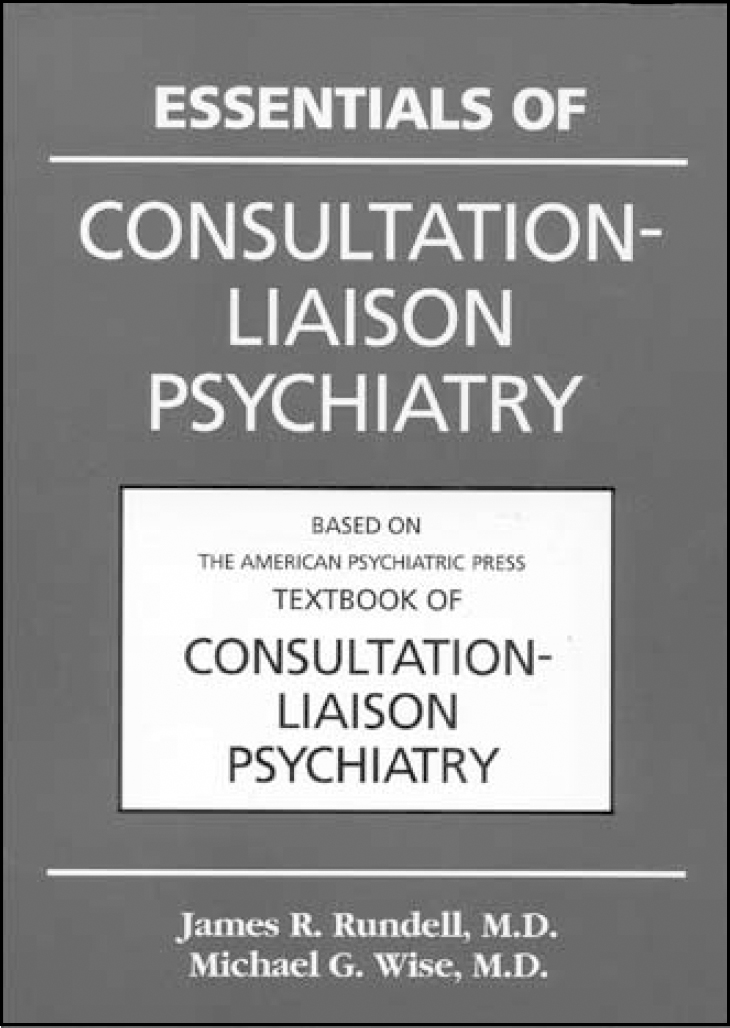Essentials of Consultation—Liaison Psychiatry is the product of a process that began with a pocketbook. This was expanded into the excellent but expensive Textbook of Consultation—Liaison Psychiatry (Reference Rundell and WiseRundell & Wise, 1996). The current volume is a more concise (and updated) reincarnation aimed at the clinician. It is easily readable and will be useful as a quick reference book in the clinical setting; the many excellent tables (listing, for example, neuropsychiatric side-effects of medications frequently used for HIV/AIDS and of chemotherapeutic agents, and the approximate duration of detectability of drugs in urine) are particularly helpful in this respect. In addition, many chapters provide a detailed, critical review of pertinent topics in consultation—liaison psychiatry, including diagnostic classifications (DSM—IV is used throughout), theoretical models of aetiology, and treatment issues.

The text is organised into four sections. The first, ‘General principles’, contains interesting chapters on the models of consultation—liaison psychiatry practised in the USA and the legal and ethical dilemmas encountered. The second section, ‘Psychiatric disorders in general hospital patients’, deals with the clinical syndromes commonly encountered in liaison psychiatry, including good coverage of substance misuse, delirium, dementia and somatisation. The real strength of this book lies in the third and largest section, ‘Clinical consultation—liaison settings’. Most British liaison psychiatrists will be well-versed in referrals from medical and surgical wards and accident and emergency departments. Also covered here in considerable depth is the potential role of the liaison psychiatrist in the fields of transplantation, gynaecology, oncology, intensive and terminal care, and HIV/AIDS, as well as an excellent chapter on liaison psychiatry within primary care. The chapter on neurology and neurosurgery valiantly tries to cover neuropsychiatric assessment and a range of neuropsychiatric disorders, which, although important, are really beyond the scope of this book. The final, fourth, section covers treatment, and although there is inevitable overlap — and a few contradictions — with the preceding sections, it is helpful to have this summarised separately. Psychopharmacological and psychotherapeutic treatment options are reviewed and there is useful background information on the pharmacodynamics of medications likely to be of use to the consultation—liaison psychiatrist, particularly an excellent chapter on the treatment of chronic pain. The chapter on psychotherapeutic management provides practical help on how to develop the clinical skills necessary in consultation—liaison settings, although cognitive—behavioural methods, which are commonly used in the UK, receive relatively little attention.
The volume is aimed at medical undergraduates, psychiatric trainees and consultation—liaison psychiatrists and also doctors and other health care professionals working in related medical and surgical fields. This wide potential readership creates some problems; for instance, the sections on mental state and neurological examinations and the descriptions of common mental symptoms are not detailed enough to be of benefit to those without significant experience in the field of psychiatry, but are superfluous for a more experienced readership.
The book has over 70 contributors, almost exclusively based in the USA, and the bias is unashamedly North American. There is little reference to important UK and European research. A further disadvantage of the American stance is that some aspects relevant to British psychiatrists (e.g. mental health legislation and legal concepts such as capacity to consent) are not covered and details of medication regimens do not always comply with British recommendations. However, to anyone seeking to broaden their knowledge of the subject this publication can be highly recommended.



eLetters
No eLetters have been published for this article.